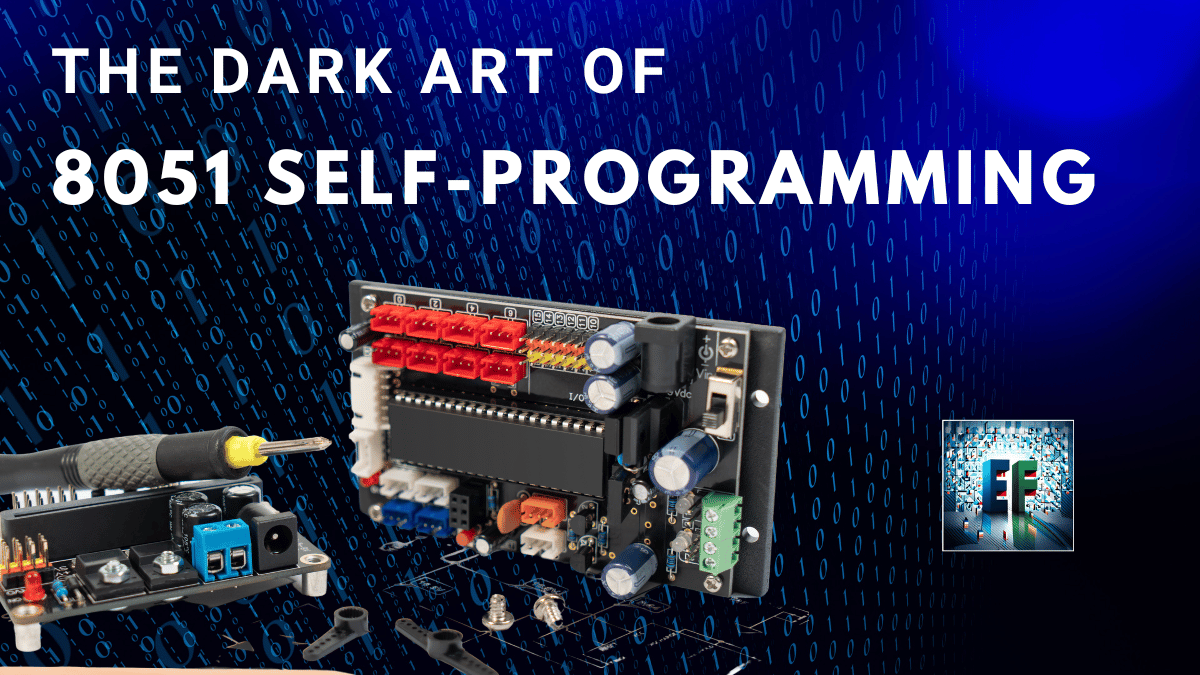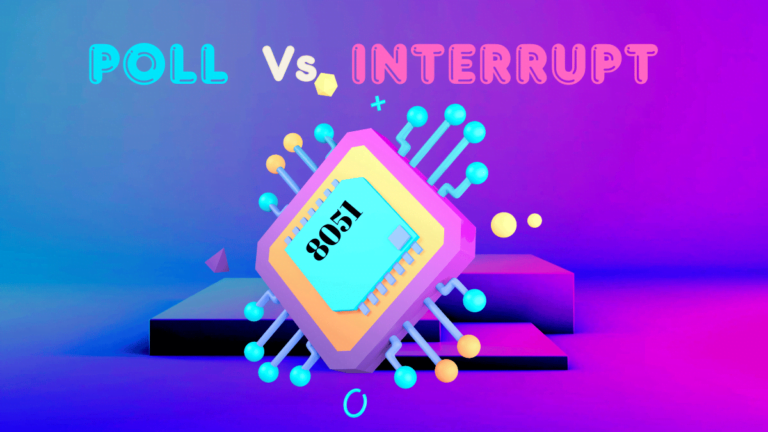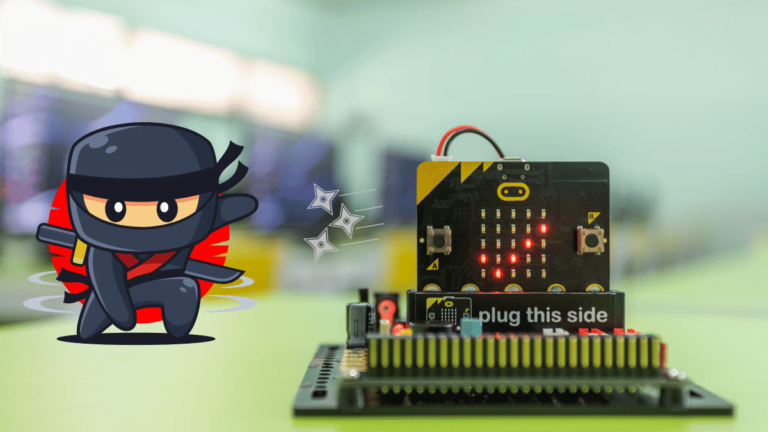In the realm of embedded systems, the 8051 microcontroller family has long been a stalwart workhorse. Its simplicity and versatility have made it a favorite among engineers for decades. However, there’s a lesser-known capability lurking within this venerable chip that pushes the boundaries of what’s possible in the world of microcontrollers: self-programming.
We’re about to embark on a journey into the fascinating world of code that can modify itself. This isn’t just an academic exercise; it’s a powerful technique that can lead to more flexible, adaptable, and efficient embedded systems. Let’s dive deep into the dark art of 8051 self-programming and uncover the secrets of code that truly writes itself.
Table of Contents
The Foundations of 8051 Self-Programming
Before we delve into the intricacies of self-programming, it’s crucial to understand the basic architecture of the 8051 microcontroller. At its core, the 8051 uses a Harvard architecture, which means it has separate memory spaces for program and data. This separation is key to understanding how self-programming works.
The 8051’s program memory is typically implemented as flash memory, which can be electrically erased and reprogrammed. This is the canvas on which our self-modifying code will work its magic. The data memory, on the other hand, is volatile RAM used for temporary storage during program execution.
To perform self-programming, we need to bridge these two worlds. We’ll use special instructions and techniques to read from and write to the program memory space, effectively allowing our code to rewrite itself.
The Self-Programming Toolkit
To embark on our self-programming adventure, we’ll need a few essential tools in our arsenal:
- MOVC instruction: This allows us to read from program memory.
- MOVX instruction: This lets us write to external memory, which we’ll use as an intermediary step.
- IAP (In-Application Programming) routines: These are built-in functions provided by many 8051 variants for erasing and writing to flash memory.
With these tools at our disposal, we’re ready to start exploring the dark art of self-programming.
The Self-Programming Process: A Step-by-Step Guide
Let’s break down the self-programming process into manageable steps:
- Read the existing code: Use MOVC to read the current contents of program memory.
- Modify the code: Perform the desired modifications in RAM.
- Erase the target flash sector: Use IAP routines to erase the section of flash we want to update.
- Write the new code: Use IAP routines to write the modified code back to flash.
Now, let’s look at each of these steps in more detail, complete with code snippets and circuit diagrams where appropriate.
Step 1: Reading Existing Code
To read from program memory, we’ll use the MOVC instruction. Here’s a simple function that reads a byte from a specified address in program memory:
READ_PROG_MEM:
MOV DPTR, #TARGET_ADDRESS ; Set DPTR to the address we want to read
CLR A ; Clear the accumulator
MOVC A, @A+DPTR ; Read byte from program memory into A
RET ; Return with the byte in A
This function sets up the DPTR (data pointer) with our target address, then uses MOVC to read the byte at that address into the accumulator (A).
Step 2: Modifying the Code
Once we’ve read the existing code, we need to modify it. This step is highly dependent on what changes we want to make. For simplicity, let’s say we want to increment every byte in a certain range. We’ll do this in RAM:
void modify_code(uint8_t *buffer, uint16_t length) {
for (uint16_t i = 0; i < length; i++) {
buffer[i]++; // Increment each byte
}
}
This C function takes a buffer (which we’ve previously filled with data read from program memory) and increments each byte.
Step 3: Erasing Flash
Before we can write our modified code back to flash, we need to erase the target sector. This is where we’ll use the IAP routines. The exact implementation varies depending on the specific 8051 variant, but here’s a general pseudo-code outline:
void erase_flash_sector(uint16_t sector_address) {
disable_interrupts();
setup_iap_command(ERASE_SECTOR);
set_iap_address(sector_address);
trigger_iap();
wait_for_iap_complete();
enable_interrupts();
}
This function disables interrupts (crucial for flash operations), sets up the IAP command for sector erase, specifies the address, triggers the operation, and waits for completion.
Step 4: Writing New Code
Finally, we’re ready to write our modified code back to flash. Again, we’ll use IAP routines:
void write_flash(uint16_t address, uint8_t *data, uint16_t length) {
disable_interrupts();
for (uint16_t i = 0; i < length; i++) {
setup_iap_command(WRITE_BYTE);
set_iap_address(address + i);
set_iap_data(data[i]);
trigger_iap();
wait_for_iap_complete();
}
enable_interrupts();
}
This function writes the modified code byte by byte to the specified flash address.
Putting It All Together: A Self-Modifying Function
Now that we’ve covered the individual steps, let’s look at a complete example of a self-modifying function. This function will read its own code, modify it, and write the changes back to flash:
void self_modifying_function(void) {
uint8_t buffer[256];
uint16_t start_address = (uint16_t)&self_modifying_function;
// Step 1: Read our own code
for (uint16_t i = 0; i < sizeof(buffer); i++) {
buffer[i] = read_prog_mem(start_address + i);
}
// Step 2: Modify the code (increment each byte)
modify_code(buffer, sizeof(buffer));
// Step 3: Erase our own flash sector
erase_flash_sector(start_address);
// Step 4: Write the modified code back to flash
write_flash(start_address, buffer, sizeof(buffer));
// The next time this function is called, it will be different!
}
This function demonstrates the complete self-modification cycle. It reads its own code, modifies it, erases its flash sector, and writes the modified version back. The next time this function is called, it will behave differently!
Circuit Considerations for Self-Programming
When working with self-programming techniques, it’s crucial to consider the hardware implications. Here’s a simplified circuit diagram showing the key connections for an 8051 microcontroller set up for self-programming:
+---------------------+
| |
| 8051 |
| Microcontroller |
| |
+-------|RESET |
| | |
| +----| P3.6 (WR#) |
| | +-| P3.7 (RD#) |
| | | | |
| | | | |
| | | | |
| | | | Flash Memory |
| | | | +----------+ |
| | | +----|WE# | |
| | +------|OE# | |
| +----------|CE# | |
| | | |
| +----------+ |
| |
+-----------------------------+
In this diagram:
- The RESET line is crucial for initializing the microcontroller and potentially triggering bootloader mode for initial programming.
- P3.6 (WR#) and P3.7 (RD#) are connected to the Write Enable (WE#) and Output Enable (OE#) pins of the flash memory, respectively.
- The Chip Enable (CE#) of the flash is also controlled by the microcontroller.
This setup allows the microcontroller to directly control the read and write operations to the flash memory, which is essential for self-programming.
Advanced Techniques and Considerations
While we’ve covered the basics of 8051 self-programming, there are several advanced techniques and considerations to keep in mind:
Bootloader Implementation
A common application of self-programming is in bootloader design. A bootloader is a small program that runs at startup and can update the main application code. This allows for firmware updates without needing specialized programming hardware.
Here’s a simplified bootloader flow:
- Check for update flag or signal (e.g., a specific pin state or data in EEPROM)
- If update needed, enter programming mode:
- Receive new firmware data (e.g., via UART)
- Erase existing application code
- Write new firmware to flash
- If no update needed (or after update), jump to main application code
Code Relocation
Sometimes, we need to execute code from RAM instead of flash. This can be useful when modifying the flash sector that contains the currently executing code. Here’s a technique for relocating code to RAM:
// Function to copy code to RAM
void copy_to_ram(uint8_t *dest, uint8_t *src, uint16_t len) {
for (uint16_t i = 0; i < len; i++) {
dest[i] = src[i];
}
}
// Function to execute in RAM
void __ram_func ram_function(void) {
// Function body
}
// Usage
uint8_t ram_buffer[256];
copy_to_ram(ram_buffer, (uint8_t*)ram_function, sizeof(ram_buffer));
((void (*)())ram_buffer)(); // Execute the function from RAM
This technique copies the function to RAM and then executes it from there, allowing us to safely modify the flash sector containing the original function.
Error Handling and Recovery
When working with self-modifying code, robust error handling is crucial. A failed write or unexpected power loss could leave the system in an unbootable state. Here are some strategies to mitigate this risk:
- Checksum verification: Always verify the integrity of the newly written code before executing it.
- Dual-bank approach: Maintain two copies of the firmware, only updating one at a time. If an update fails, the system can fall back to the other copy.
- Watchdog timers: Use watchdog timers to detect if the system hangs during the update process and trigger a reset.
Here’s a simple checksum function that can be used for verification:
uint16_t calculate_checksum(uint8_t *data, uint16_t len) {
uint16_t sum = 0;
for (uint16_t i = 0; i < len; i++) {
sum += data[i];
}
return sum;
}
Security Implications of Self-Programming
While self-programming offers powerful capabilities, it also opens up potential security vulnerabilities. An attacker who gains control of a self-programming system could potentially inject malicious code. Here are some security considerations:
- Code signing: Implement a digital signature system to verify the authenticity of any code before it’s written to flash.
- Secure boot: Use a hardware-backed secure boot process to ensure only trusted code is executed at startup.
- Memory protection: Utilize memory protection units (MPUs) if available to restrict write access to critical memory regions.
Conclusion: The Power and Responsibility of Self-Modifying Code
We’ve journeyed deep into the dark art of 8051 self-programming, uncovering the techniques that allow code to write itself. From the basic principles to advanced considerations, we’ve explored the power and complexity of this fascinating capability.
Self-programming opens up a world of possibilities: dynamic firmware updates, adaptive algorithms, and resilient systems that can repair themselves. However, with great power comes great responsibility. The ability to modify running code demands careful design, robust error handling, and a keen awareness of security implications.
As we push the boundaries of what’s possible with embedded systems, techniques like self-programming will play an increasingly important role. By mastering these skills, we equip ourselves to create the next generation of intelligent, adaptable, and resilient embedded systems.
The 8051, despite its age, continues to surprise us with its capabilities. Who knows what other secrets this venerable microcontroller family might still be hiding? The journey of discovery in embedded systems never truly ends – it simply opens new doors to explore.







